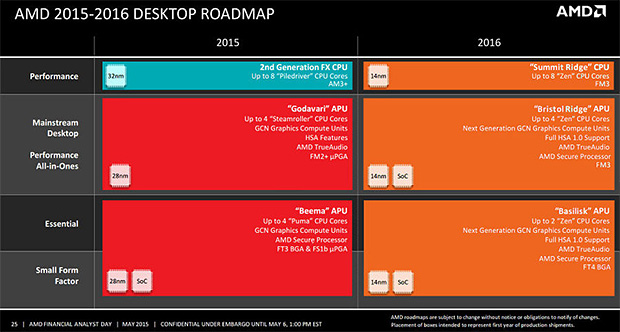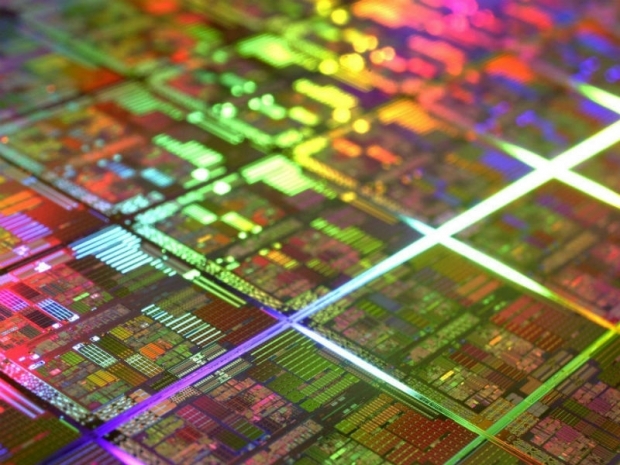In 2015 AMD's biggest and fastest desktop processor is the 2nd Generation FX CPU, with up to 8 Piledriver CPU cores. The fastest of them is AMD FX-9590 with 8 times 4.70GHz and this baby has a TDP of 220W. The Octa-core FX 8370, codenamed Vishera, is another 32nm chip that has a base frequency of 4GHz and can hit 4.3 GHz on Turbo. It has a more realistic 125W TDP.
In 2016, the 2nd Generation FX will be replaced by Summit Ridge CPU with up to eight Zen cores. This platform will use the new FM3 socket, a clear successor to the FM2+. AMD is clear that the 16-core version of this CPU is designed for the Opteron market, but since the Zen design is modular, you can also expect 16 core Desktop processor if necessary.
Godaveri APU is a Kaveri refresh. Godaveri will be replaced in 2016 by the new Bristol Ridge APU. This processor has up to four Zen CPU cores, Next generation graphics, probably Greenland that we mentioned before. It has a full HSA 1.0 support, AMD True Audio, AMD Secure processor and uses the new FM3 socket. This is another 14nm SoC from the house of AMD meant for desktop. 
Beema, a 28nm APU with up to four Puma cores wasn’t doing that great on the market. This one will be replaced by Basilisk APU, another 14nm SoC with up to 2 Zen Cores. As you can see Zen is a very power aware core and can enable Basilisk APU to power essential and small form factor designs. AMD is going after Atom designs with this one, but again in 2016. It has to fight rather well established Intel Atom x7 and x5 processors based on the 14nm manufacturing process, formerly known as Cherry Trail, which will be succeeded by Willow Trail.
Basilisk APU will also have a next generation GCN compute unit, Full HSA 1.0 support, AMD True Audio, AMD secure processor and FT4 BGA socket.
No 20nm CPUs for desktop
As we repeatedly stated, that 20nm manufacturing node is broken for GPUs and since we saw 20nm SoCs including the Snapdragon 810 are having difficulties with throttling and performance at desired clock speeds, AMD has decided to skip the 20nm for all desktop parts. AMD will have one mobile SKU this year in 20nm, but we don’t know when this one will be coming.
It is becoming clear than both GlobalFoundries and TSMC 20nm processes have a problem with high performance and high TDP chips such as GPUs and CPUs / APUs. This is why we were stick with 28nm for much longer than anyone hoped for.
Let's hope that AMD can ship its 14nm desktop parts in a reasonable time frame next year. Our information tells us to expect these parts by Q3 2016, or a bit more than a year from now.




